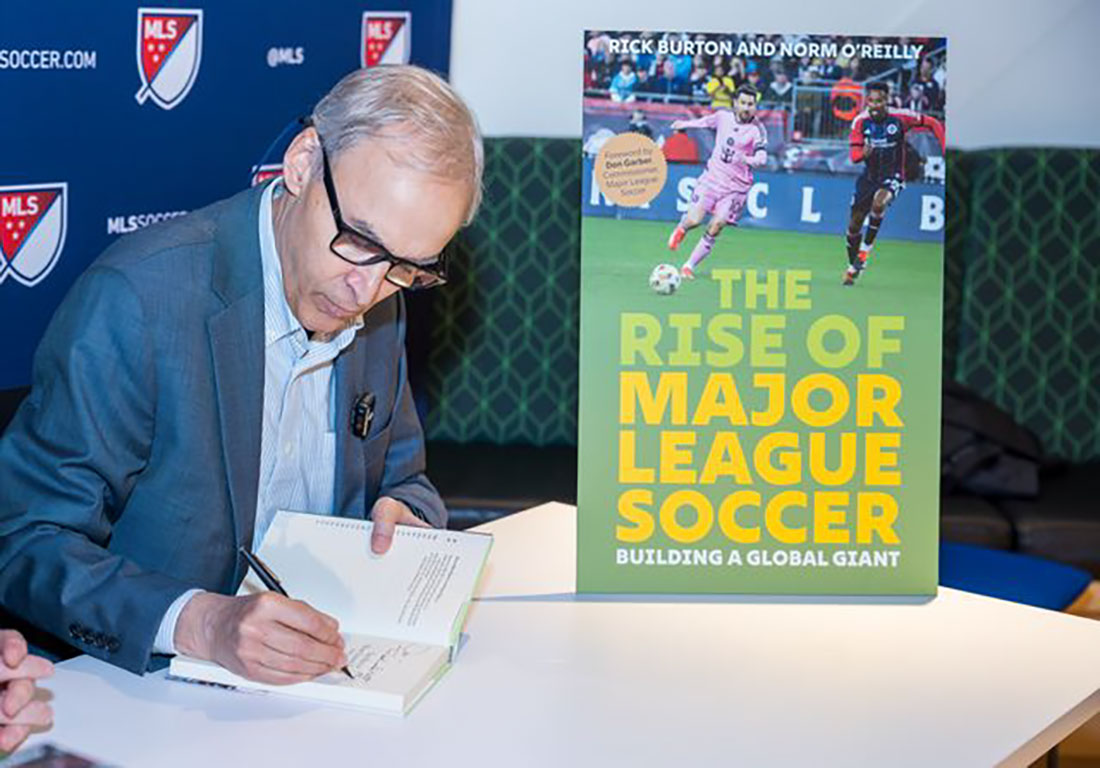
With the 30th anniversary of Major League Soccer (MLS) fast approaching, it’s obvious MLS has come a long way from its modest beginning in 1996. Once considered an underdog in the American sports landscape, the league has grown into a global player. MLS now draws international stars, record-breaking crowds and major media deals.
It’s also become home to a number of former Syracuse student athletes, with Kamal Miller, Deandre Kerr, Alex Bono and Miles Robinson all suiting up for MLS teams. But behind the headlines and highlight reels is a deeper story.
“There’s a long history of failed soccer leagues in North America,” says Falk College of Sport and Human Dynamics Professor Rick Burton, who has spent years studying the evolution of MLS. “Many investors, owners and even players lost a lot of money before MLS finally found its footing. That context is important—it shows just how remarkable the league’s success really is.”
This success has taken 30 years to grow. The league started in 1996, with professional soccer returning to the states for the first since 1984, when the North American Soccer League ceased operations.
“What amazed us was just how much MLS had evolved,” Burton says. “When the Apple deal was announced and Inter Miami signed Lionel Messi, the numbers—attendance, rising team values, internationality of players—really stood out.”
Burton, along with Norm O’Reilly, a professor at the University of New England, have studied the rise of soccer’s popularity in the United States, specifically MLS, one of the most diverse leagues on the planet, O’Reilly says. “It’s been that way for years, and that diversity is a huge part of its appeal both domestically and internationally,” he says.

That success is the focus of a new book, “The Rise of Major League Soccer,” co-authored by Burton and O’Reilly and released this week. It offers a comprehensive and research-driven look at how MLS has grown into one of the world’s most dynamic sports leagues, drawing on a wide range of sources, including exclusive demographic data provided by MLS itself.
Both Burton and O’Reilly have also explored how the league has strategically positioned itself for long-term success. Soccer-specific stadiums, a global media partnership with Apple and the arrival of global icons like David Beckham and Lionel Messi have all played a role in reshaping how MLS is perceived.
With the U.S. set to host the FIFA Club World Cup in 2025 and the FIFA World Cup in 2026, the timing for MLS couldn’t be better. “MLS is no longer just a league with potential,” says Burton. “It’s a case study in how vision, strategy and persistence can build something truly global.”
“There are key takeaways, learnings and best practices that sport business professionals can apply in their own work,” says Burton. “We wanted this to be both a compelling story and a useful resource.”
A Syracuse University News story by Keith Kobland originally published on May 7, 2025.
